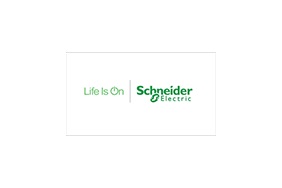6 Ways Business Can Align with Sustainable Development Goals
Published 03-04-20
Submitted by Schneider Electric

6 Ways Business Can Align with Sustainable Development Goals
2020 marks the start of the Decade of Action to deliver on Sustainable Development Goals (SDGs), which combat poverty, inequality and injustice and climate change by 2030. Following the success of the Millennium Development Goals, SDGs have been adopted as part of the 2030 Agenda for Sustainable Development, signed by 193 countries. The SDGs are comprised of 17 goals and 169 targets such as the elimination of poverty and hunger, fighting climate change, supporting decent work and growth and creating sustainable cities and communities. For many companies, aligning with SDGs is the next big way to make a positive impact as an organization and attract investment dollars from increasingly climate-active investors.
In this article, Irina Gilfanova of Schneider Electric Energy & Sustainability Services details how companies can use SDGs to drive organizational change.
The recent rise in global commitments and initiatives for sustainable development, such as the Global Investors for Sustainable Development (GISD) Alliance’s commitment to investing SDGs and reinforcing SDG actions across their portfolios, now requires companies to run the SDG assessment for their business and develop a response strategy. According to a KPMG study on SDG reporting in 2018, 84% of top companies have identified the SDGs that are most relevant to their business.
SDGs are becoming increasingly important to investors, as they represent a material ESG (environmental, social and governance) perspectives that investors take into account as part of their fiduciary duty. There is a strong business case for investing in companies aligned with the SDGs, which are shown to secure steady returns for investors by creating competitive advantage of their portfolio.
A report “Better Business, Better World” by the Business & Sustainable Development Commission revealed that the business models related to the SDGs could open opportunities worth up to $12 trillion and increase employment by up to 380 million jobs by 2030. As an example, in 2018, the World Bank, BNP Paribas, and Swiss private bank, SYZ, partnered to offer an equity bond that linked investment returns to the performance of companies in line with SDGs. The return on investment of the bond is directly linked to the stock performance of companies included in the Solactive Sustainable Development Goals World MV Index. According to the report published by PRI and the UN in 2018, 82% of PRI signatories reporting on the effects of ESG factors following integration say it affected their buy/sell decisions.
SDGs serve as a universal framework for businesses to communicate performance, set targets and actions, engage with various stakeholders, including investors and gain access to new market opportunities. The framework fosters collaboration to solve the world’s most challenging tasks in sustainability. Companies that wish to pursue SDGs and the benefits they bring should follow a series of steps in order to maximize the opportunity.
How can your business align its strategy with the SDG framework?
1. Understand the SDGs and link relevant targets to your business activities
The very first step for companies in their SDG journey is to learn more about each of the goals, the relevant targets, and KPIs to see how they are directly and indirectly related to their business activities.
For example, Schneider Electric connected its business activities to all 17 goals via 5 megatrends: Climate, Circular Economy, Ethics, Health & Equity, and Development.
2. Define priorities
Companies should prioritize SDG targets by considering which will have the biggest impact in terms of risk or opportunity in medium- to long-term and which goals the company has the ability to contribute to achieving progress in. It may be that a company is contributing to all of the 17 goals, but when allocating resources and defining the timeline, it is important to start with those targets which create the largest impact. As an example, the Chinese technology company, Huawei, actively worked on developing the ICT Sustainable Development Goals Benchmark. They explored the relationship between ICT and sustainable development and identified the goals with the biggest correlation to the ICT sectors: SDG-4 – Quality of Education, SDG 3 – Good Health & Well-being, SDG 9 – Industry, Innovation and Infrastructure. These sectoral benchmarks can be used as the first step for the company to understand their impacts across different goals.

Schneider Electric
Schneider Electric
Schneider Electric is a European multinational company providing energy and automation digital solutions for efficiency and sustainability.
More from Schneider Electric

